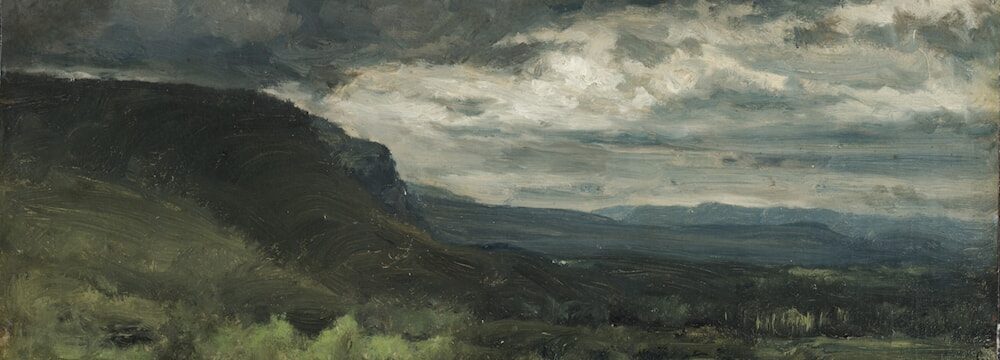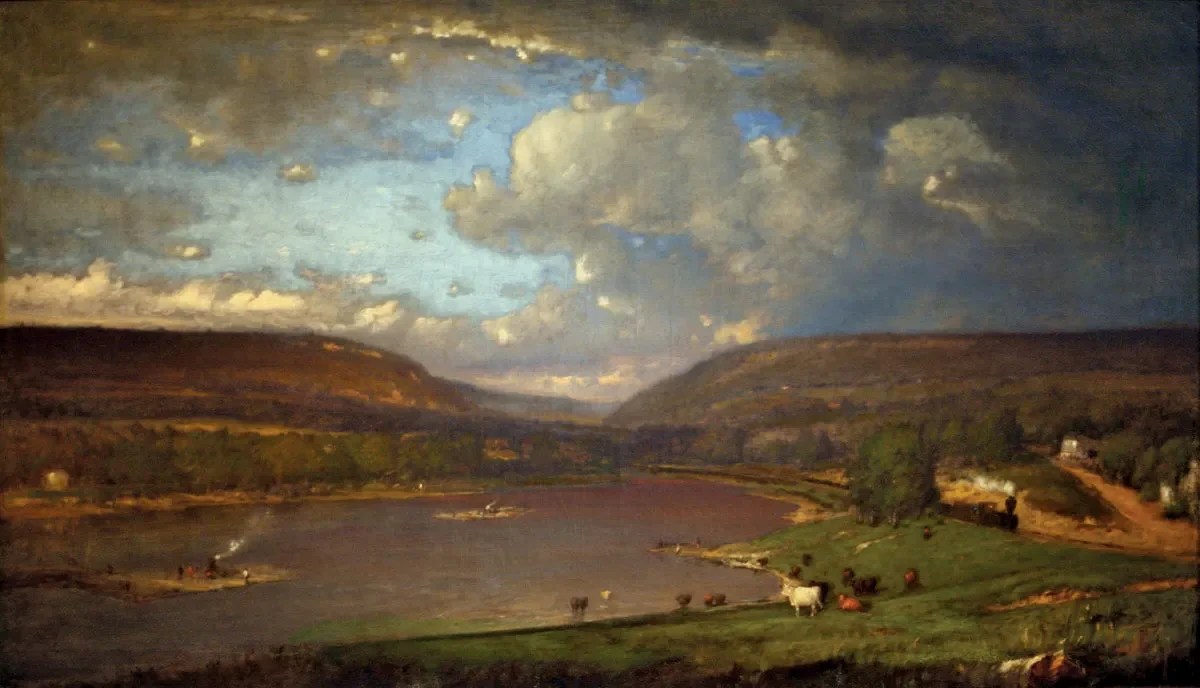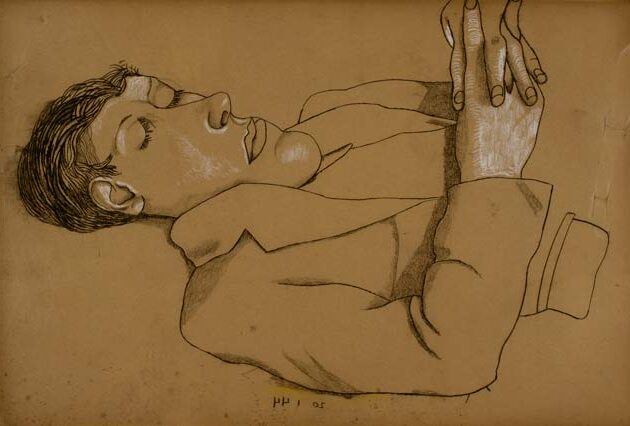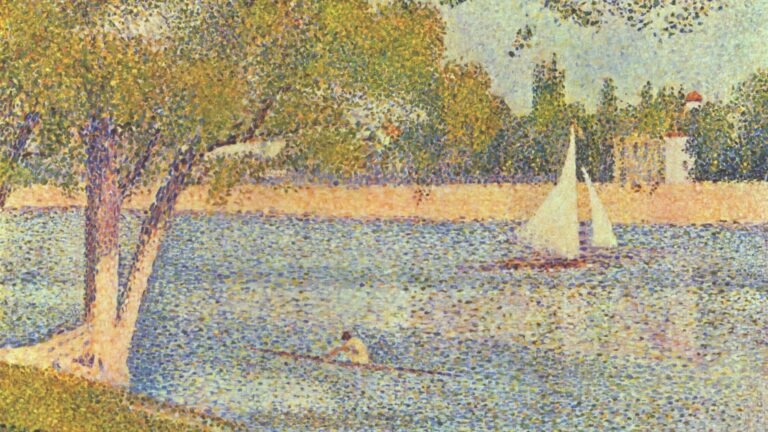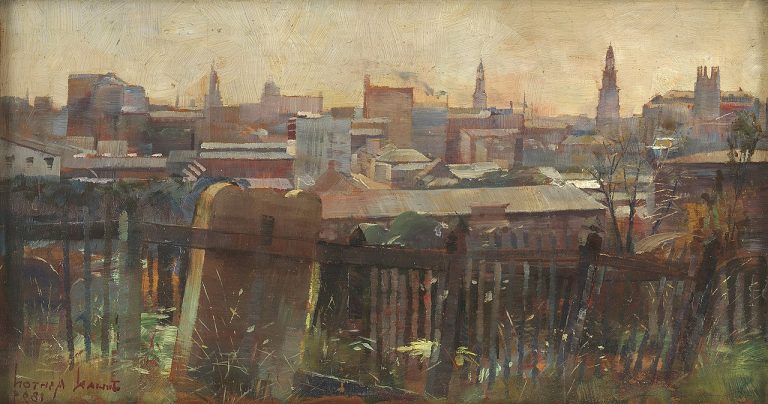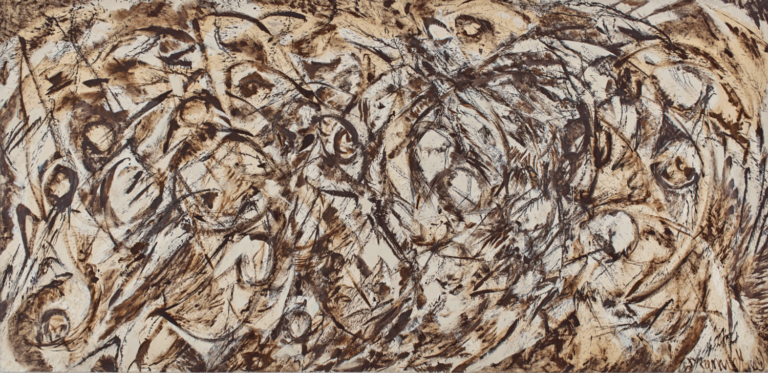George Inness: Painter Who Transformed American Landscape Art
Born: May 1, 1825, Newburgh, New York, U.S.
Death: August 3, 1894, Bridge of Allan, Scotland
Art Movement: Hudson River School
Nationality: American
Teacher: John Jesse Barker
Institution: Barbizon school of France
George Inness: Painter Who Transformed American Landscape Art
Life and Career of George Inness
George Inness (1825-1894) was one of America’s most influential landscape painters. His artistic journey spanned several decades and reflected significant shifts in style, from detailed realism to atmospheric spirituality.
Early Years and Education
George Inness was born on May 1, 1825, in Newburgh, New York. He grew up in Newark, New Jersey, where his father ran a grocery store.

Sunrise, 1887, by George Inness
Young Inness showed early artistic talent but received little formal education.
At age 14, he briefly studied with itinerant artist John Jesse Barker. In his late teens, Inness apprenticed with a map engraver in New York City, which helped develop his technical skills.
Unlike many American artists of his time, Inness never attended a formal art academy. He was largely self-taught, studying paintings in galleries and learning through experimentation. This independent approach to learning shaped his unique artistic voice.
Artistic Influences and Style
Inness was deeply influenced by the Hudson River School early in his career. However, he soon moved beyond their precise detail toward more emotional interpretations of landscapes.
His first trip to Europe in 1851 exposed him to French Barbizon painters, who emphasized mood over exact representation. This approach resonated with Inness’s developing aesthetic sensibilities.
Inness became fascinated with Swedenborgianism, a spiritual philosophy that viewed nature as a reflection of divine reality. This belief profoundly shaped his later work, as he sought to capture the spiritual essence of landscapes rather than mere appearances.
His distinctive style blended reality with emotional and spiritual qualities. He used soft, blurred edges, atmospheric effects, and subtle color harmonies to evoke contemplative moods.
Notable Periods and Evolution
Inness’s early works (1840s-1850s) showed tight brushwork and careful detail typical of Hudson River School painters. “The Lackawanna Valley” (1855) exemplifies this period, though it already hints at his future direction.
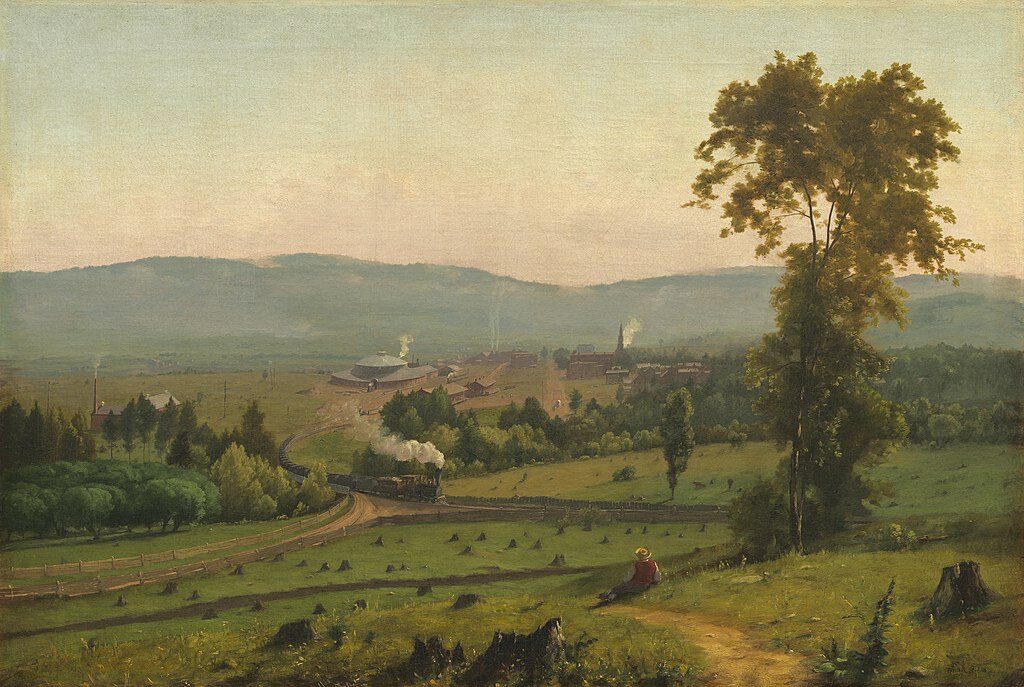
The Lackawanna Valley, c. 1856, by George Inness
During the 1860s-1870s, his middle period, Inness developed a looser, more atmospheric style. He began experimenting with light effects and emotional resonance in works like “Peace and Plenty” (1865).
His most distinctive late period (1880s-1890s) featured increasingly abstract, tonalist landscapes. These works used fewer details, softer boundaries, and harmonious color schemes to evoke spiritual feelings. “The Home of the Heron” (1891) demonstrates this mature style.
Throughout these periods, Inness constantly refined his techniques to better express his vision of nature’s spiritual essence.
Later Years and Legacy
In his final years, Inness achieved both critical acclaim and financial success. His later paintings commanded high prices and won prestigious awards.
He traveled extensively between America and Europe, maintaining studios in both locations. His final home and studio in Montclair, New Jersey became a gathering place for admiring younger artists.
Inness died on August 3, 1894, while visiting Scotland. According to witnesses, he collapsed while watching a sunset, pointing to the sky and exclaiming about its beauty—a fitting end for an artist so devoted to capturing nature’s splendor.
His legacy lives on through his profound influence on American art. Inness helped transition American landscape painting from literal documentation toward emotional expression. His spiritual approach to landscape anticipated later movements like Tonalism and even abstract expressionism.
Major Works and Themes
George Inness created over 1,150 paintings, watercolors, and sketches during his lifetime. His work evolved from detailed Hudson River School landscapes to more atmospheric, spiritual compositions influenced by his Swedenborgian beliefs.
Key Paintings and Exhibitions
Inness’s notable works include “Niagara” (1889) and “Niagara Falls” (1885), both showcasing his ability to capture natural wonders with emotional depth. “Sundown” (1884) demonstrates his masterful use of light and atmosphere to create mood.
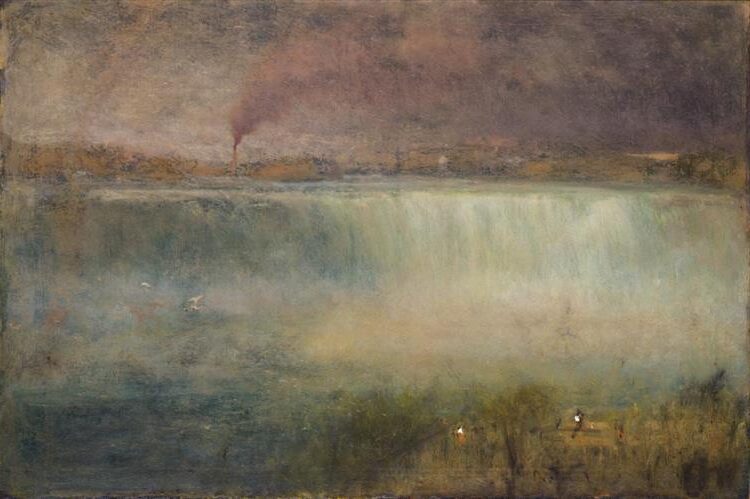
Niagara, 1889, by George Inness
“Winter Moonlight (Christmas Eve)” (1866) represents a turning point in his style, showing looser brushwork and more evocative qualities after he began following Emanuel Swedenborg’s teachings.
“Georgia Pines” (1890) and “George Inness’s Home, Tarpon Springs, Florida” reflect his interest in American landscapes across different regions. His works were exhibited in major galleries and museums throughout the United States during his lifetime.
Recurring Imagery and Symbolism
Inness frequently depicted transitional moments in nature like sunrise, sunset, and changing seasons. These temporal shifts aligned with his spiritual beliefs about transformation and the connection between the physical and spiritual worlds.
Trees appear as powerful symbols throughout his work, often serving as intermediaries between earth and sky. Particularly in his later works, Inness used mist and atmospheric effects to blur boundaries, suggesting the impermanence of the material world.
His palette evolved from the bright, clear colors of his early career to more subdued, harmonious tones that created unified compositions. This shift reflected his growing interest in spiritual unity and the interconnectedness of all natural elements.
Critical Reception and Interpretations
Critics praised Inness for moving American landscape painting beyond mere topographical documentation toward more emotional and spiritual expression. His atmospheric approach influenced the development of Tonalism in American art.

Evening at Medfield, Massachusetts, 1875, by George Inness
Art historians view his work as bridging multiple movements, from Hudson River School precision to more modern approaches that emphasized mood over detail. This evolution makes him a pivotal figure in 19th-century American art.
While some contemporary critics questioned his increasingly abstract style, modern interpretations celebrate this quality. Today, scholars recognize how his spiritual beliefs informed his artistic choices, seeing his landscapes as expressions of divine presence in nature rather than simple scenic views.
Impact on American Art
George Inness reshaped American landscape painting through his distinctive style and philosophical approach. His work bridged traditional Hudson River School techniques with more modern European influences, creating a uniquely American artistic voice.
Inness’s Contribution to Tonalism
Inness stands as the foremost pioneer of Tonalism in American art. This style used muted color palettes and soft, atmospheric effects to create moody, evocative landscapes. His later works featured blurred outlines and harmonious tones that emphasized feeling over precise detail.

The Storm, 1885, by George Inness
Tonalism represented a significant departure from the detailed realism popular in mid-19th century American art. Inness focused on capturing emotional and spiritual qualities of nature rather than photographic accuracy.
His paintings like “The Lackawanna Valley” (1855) demonstrated his evolution toward this style. As his career progressed, his work became increasingly abstract and expressive, using layers of translucent color to create luminous effects.
Influence on Subsequent Artists
Inness profoundly shaped generations of American artists. His spiritual approach to landscape painting influenced the California Tonalists, including Arthur Mathews and Xavier Martinez, who adopted his techniques in the early 20th century.
His methods inspired important American painters like:
- James Abbott McNeill Whistler: Adopted Inness’s atmospheric qualities
- Henry Ward Ranger: Founded the Old Lyme Art Colony with Tonalist principles
- Dwight Tryon: Continued the Tonalist tradition in American art
Inness’s emphasis on emotional response to landscape rather than literal depiction helped pave the way for American Impressionism and later Modernist movements. His work created a bridge between 19th-century Romanticism and 20th-century abstraction.
Preservation of Works and Collections
Major American museums house significant collections of Inness’s works. The Metropolitan Museum of Art in New York holds over 40 of his paintings, while the National Gallery of Art maintains another substantial collection.
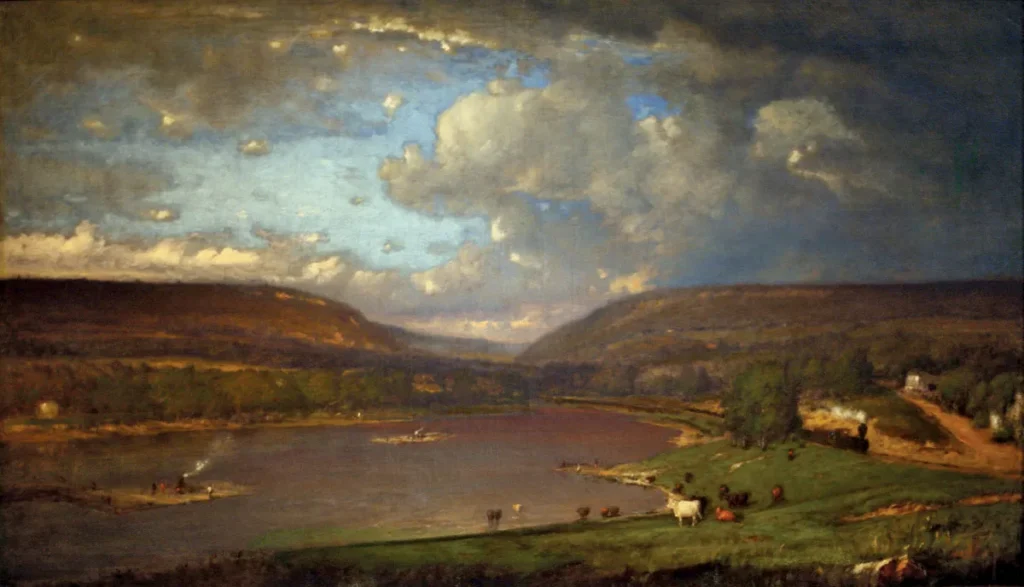
On the Delaware River, 1860s, by George Inness
Inness’s market value has steadily increased since his death in 1894. His paintings now command prices in the millions at major auctions, reflecting his importance in American art history.
Conservation efforts focus on preserving his delicate glazing techniques and subtle color relationships. Digital preservation projects at institutions like the Smithsonian American Art Museum have made his work more accessible to researchers and the public.
His former home and studio in Montclair, New Jersey is now a historical site that helps preserve his artistic legacy.
Frequently Asked Questions
George Inness developed distinctive artistic techniques and made significant contributions to American painting. His unique style evolved over time, drawing from various influences while creating lasting impacts on the art world.
What are the characteristic features of George Inness’s painting style?
George Inness was known as a master of light, color, and shadow. His landscapes feature rich atmospheric qualities that evoke mood and emotion.
Inness used layered, complex surfaces in his work. This technique created depth and a sense of mystery in his paintings.
His later works became increasingly abstract and spiritual. He moved away from literal depictions toward more expressive, contemplative landscapes.
How has George Inness contributed to the Tonalism movement in art?
Inness is often considered a key figure in American Tonalism. This movement emphasized muted color palettes and harmonious tones to create atmospheric effects.
His focus on mood over strict representation helped define the Tonalist approach. Inness’s paintings demonstrate how subtle color variations can convey emotional depth.
Through his artistic innovations, he helped establish Tonalism as a distinctive American art movement that influenced many later artists.
What inspirations and influences are evident in the works of George Inness?
Inness was influenced by the Hudson River School early in his career. However, he soon developed his own approach to landscape painting.
European art, particularly the Barbizon School, shaped his artistic vision. His travels to Italy and France exposed him to different approaches to light and composition.
Spiritual beliefs, especially Swedenborgianism, profoundly affected his later work. This philosophical influence led him to seek deeper meaning in his landscape paintings.
Can you describe the evolution of George Inness’s art throughout his career?
Inness began with more traditional, detailed landscape paintings. His early works show influences from the Hudson River School style.
In mid-career, he shifted toward more atmospheric and emotive landscapes. European influences became more apparent during this period.
His late period featured increasingly abstract and spiritual works. Inness painted over 1,100 oil paintings and works on paper throughout his prolific career.
How is the value of a George Inness painting determined in the art market?
The value of Inness paintings depends on several factors, including size, period, and subject matter. His later, more spiritual works often command higher prices.
Provenance and exhibition history significantly impact value. Paintings with documented ownership history and museum exhibitions typically sell for premium prices.
Condition and authenticity are critical considerations. Because Inness frequently painted over older works, proper authentication is essential for establishing value.
What techniques did George Inness employ to achieve his signature aesthetic?
Inness utilized layering techniques. Often, he painted over existing works. This created rich, textured surfaces that add depth to his landscapes.
He mastered subtle color relationships to create atmospheric effects. His command of light and shadow helped him achieve emotive qualities in his scenes.
Inness also employed loose, suggestive brushwork rather than precise detail. This approach allowed viewers to engage their imagination when experiencing his paintings.

